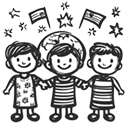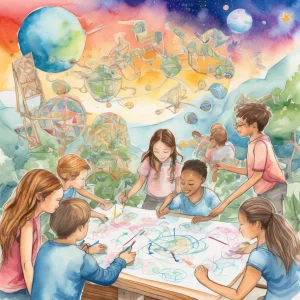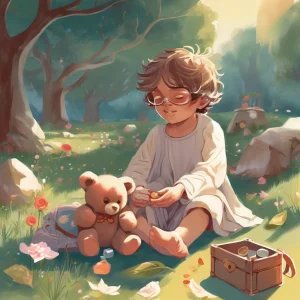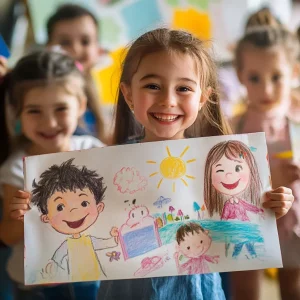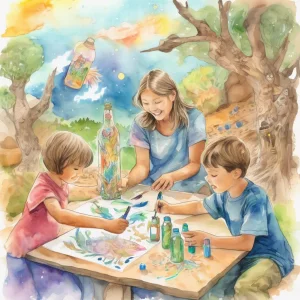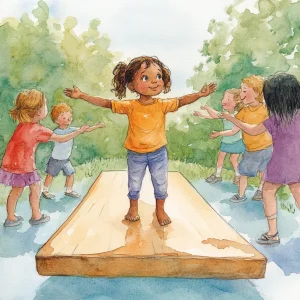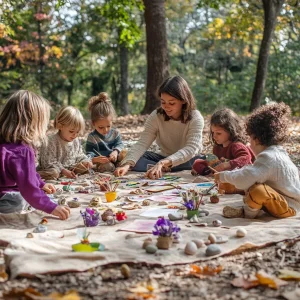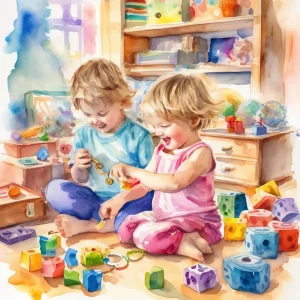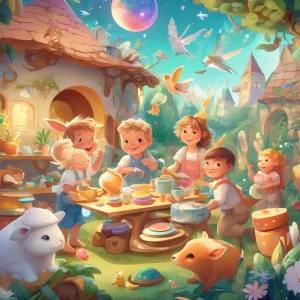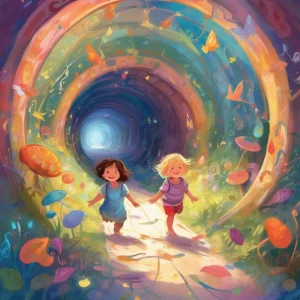Activity
Similar Activities
Tech Adventure Obstacle Course Expedition
Children’s Age: 11–15 years
Activity Duration: 30 minutes
Engage children in a tech-inspired obstacle course activity to boost academic and language skills, coordination, and communication. Set up a play area with cardboard boxes, tubes, …
Activity Duration: 30 minutes
Dancing Around the World: Cultural Adventure Dance
Children’s Age: 2–2.5 years
Activity Duration: 5 – 15 minutes
"Dancing Around the World" is an engaging activity designed to enhance children's coordination, balance, and cultural appreciation through dance. By incorporating music, scarves, a…
Activity Duration: 5 – 15 minutes
Sensory Treasure Hunt: A Magical Exploration Journey
Children’s Age: 0 month – 6 years
Activity Duration: 10 minutes
Let's go on a Sensory Treasure Hunt! We will use our senses to explore different items like textures, scents, and sounds. You can feel, smell, and listen to each item while blindfo…
Activity Duration: 10 minutes
Magical Storytelling: Create Together with Friends
Children’s Age: 4–6 years
Activity Duration: 15 – 30 minutes
In the Create a Story Together activity, children will explore their creativity, language skills, and teamwork. Get small pieces of paper, colored pencils, and a container ready. K…
Activity Duration: 15 – 30 minutes
Eco-Friendly Piggy Bank Crafting: Saving with Style
Children’s Age: 10–12 years
Activity Duration: 35 – 45 minutes
In the Eco-Friendly Piggy Bank Crafting activity, children will make their piggy banks using stationery materials to learn about saving money, reusing items, and environmental awar…
Activity Duration: 35 – 45 minutes
Balance Beam Adventure: Enhancing Coordination and Focus
Children’s Age: 2–12 years
Activity Duration: 5 minutes
This fun activity called "Balancing Act Fun" is perfect for kids aged 2 to 6. It helps improve coordination, balance, and self-regulation. You'll need a flat surface, a stable boar…
Activity Duration: 5 minutes
Nature Explorers: Scavenger Hunt & Art
Children’s Age: 2–6 years
Activity Duration: 10 minutes
Let's go on a Nature Scavenger Hunt and Outdoor Art adventure! We will explore nature, collect items, and create beautiful artwork. You will need a bag, paper, crayons, watercolors…
Activity Duration: 10 minutes
Animal Feast Adventure: A Whimsical Feeding Frenzy
Children’s Age: 5–8 years
Activity Duration: 10 – 25 minutes
An interactive activity where children feed toy animals with pretend food, promoting communication skills and adaptive development.
Activity Duration: 10 – 25 minutes
Sensory Sound Box Exploration: A Musical Adventure
Children’s Age: 1–1.5 years
Activity Duration: 5 – 20 minutes
An engaging activity involving sensory exploration of sound using a variety of household items.
Activity Duration: 5 – 20 minutes
Sensory Music-Making Session: Sound Story Drawing Adventure
Children’s Age: 2–2.5 years
Activity Duration: 5 – 20 minutes
A sensory music-making activity using household items to enhance sensory development and introduce children to the world of music.
Activity Duration: 5 – 20 minutes
Whispers of the Future: Persuasive Writing Adventure
Children’s Age: 8–11 years
Activity Duration: 10 – 30 minutes
Engaging activity for 8-11-year-olds focusing on persuasive writing, career exploration, and technology experiments.
Activity Duration: 10 – 30 minutes
Enchanted Melodies: The Musical Tunnel Crawl
Children’s Age: 1–1.5 years
Activity Duration: 5 minutes
An engaging tunnel crawling activity with musical instruments for children aged 13-17 months.
Activity Duration: 5 minutes


